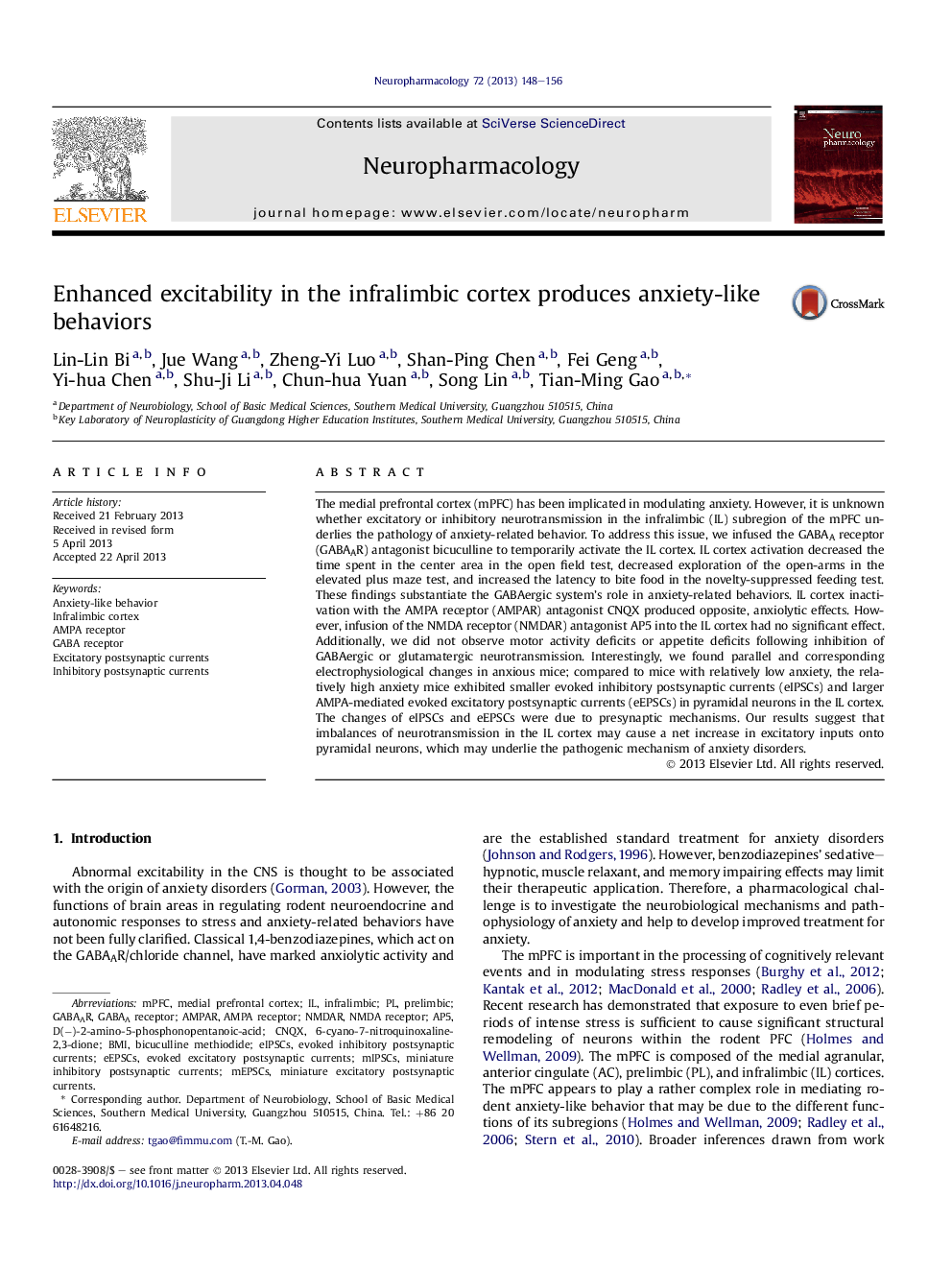| کد مقاله | کد نشریه | سال انتشار | مقاله انگلیسی | نسخه تمام متن |
|---|---|---|---|---|
| 2493461 | 1556641 | 2013 | 9 صفحه PDF | دانلود رایگان |

• We studied the function of the IL cortex in regulation of anxiety.
• Infusion of GABAAR antagonist into the IL cortex increased anxiety-like behaviors.
• Infusion of AMPAR antagonist into the IL cortex decreased anxiety-like behaviors.
• Enhanced excitatory inputs onto IL pyramidal cells were found in high anxiety mice.
• Reduced inhibitory inputs onto IL pyramidal cells were found in high anxiety mice.
The medial prefrontal cortex (mPFC) has been implicated in modulating anxiety. However, it is unknown whether excitatory or inhibitory neurotransmission in the infralimbic (IL) subregion of the mPFC underlies the pathology of anxiety-related behavior. To address this issue, we infused the GABAA receptor (GABAAR) antagonist bicuculline to temporarily activate the IL cortex. IL cortex activation decreased the time spent in the center area in the open field test, decreased exploration of the open-arms in the elevated plus maze test, and increased the latency to bite food in the novelty-suppressed feeding test. These findings substantiate the GABAergic system's role in anxiety-related behaviors. IL cortex inactivation with the AMPA receptor (AMPAR) antagonist CNQX produced opposite, anxiolytic effects. However, infusion of the NMDA receptor (NMDAR) antagonist AP5 into the IL cortex had no significant effect. Additionally, we did not observe motor activity deficits or appetite deficits following inhibition of GABAergic or glutamatergic neurotransmission. Interestingly, we found parallel and corresponding electrophysiological changes in anxious mice; compared to mice with relatively low anxiety, the relatively high anxiety mice exhibited smaller evoked inhibitory postsynaptic currents (eIPSCs) and larger AMPA-mediated evoked excitatory postsynaptic currents (eEPSCs) in pyramidal neurons in the IL cortex. The changes of eIPSCs and eEPSCs were due to presynaptic mechanisms. Our results suggest that imbalances of neurotransmission in the IL cortex may cause a net increase in excitatory inputs onto pyramidal neurons, which may underlie the pathogenic mechanism of anxiety disorders.
Journal: Neuropharmacology - Volume 72, September 2013, Pages 148–156